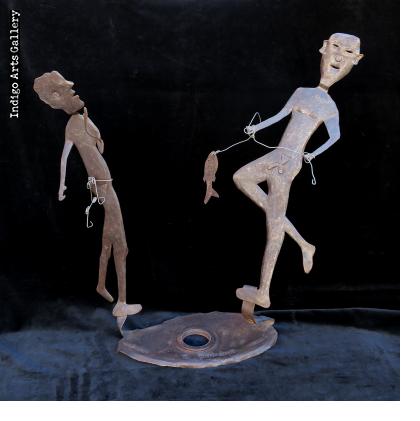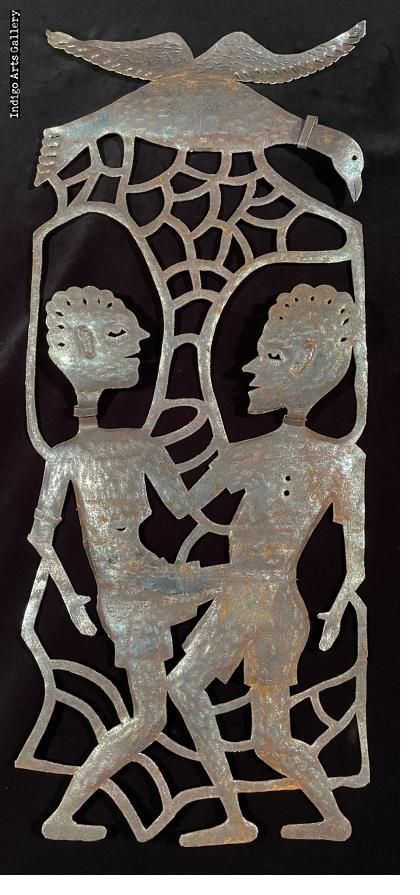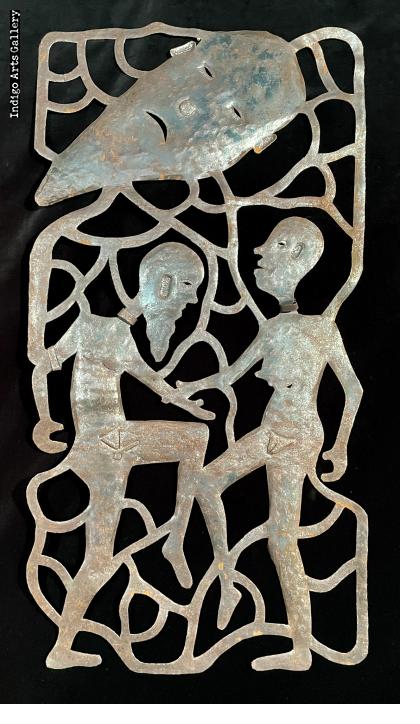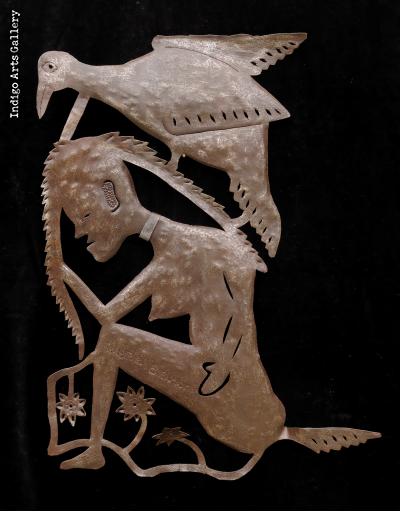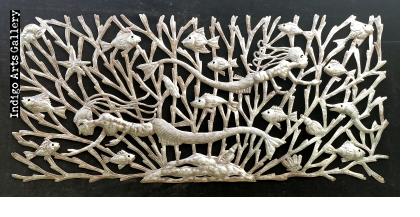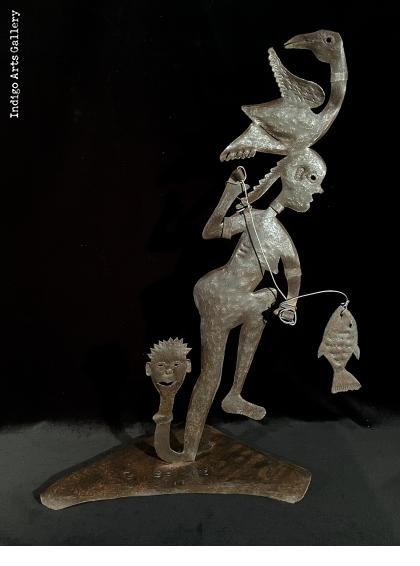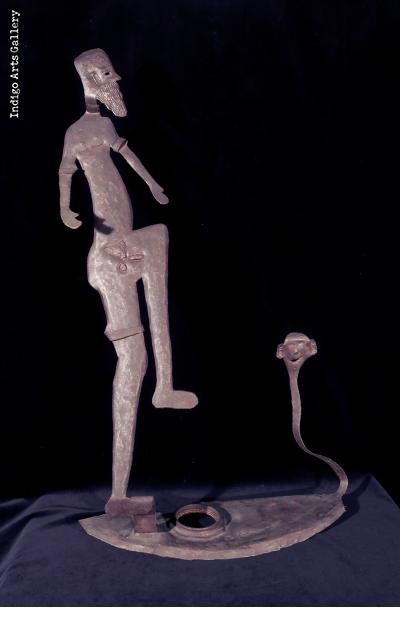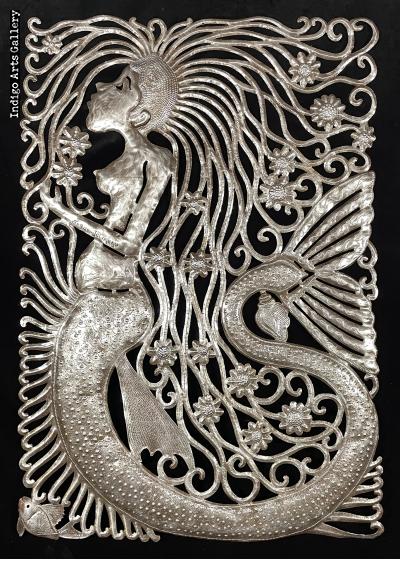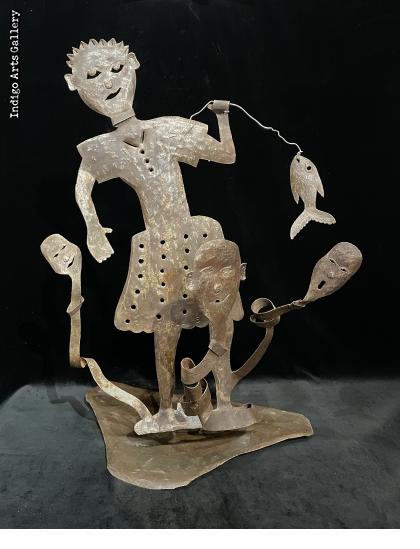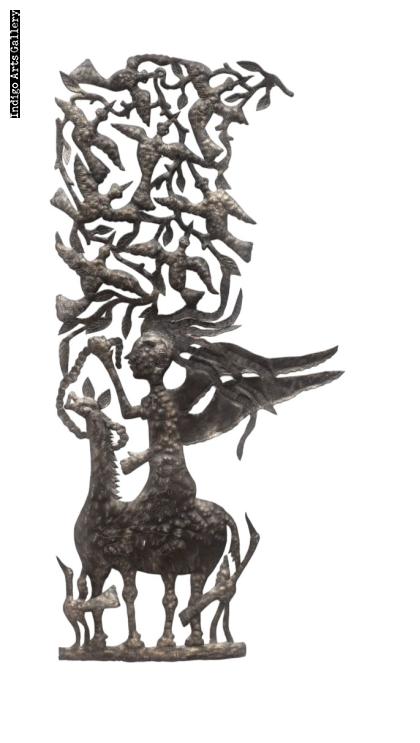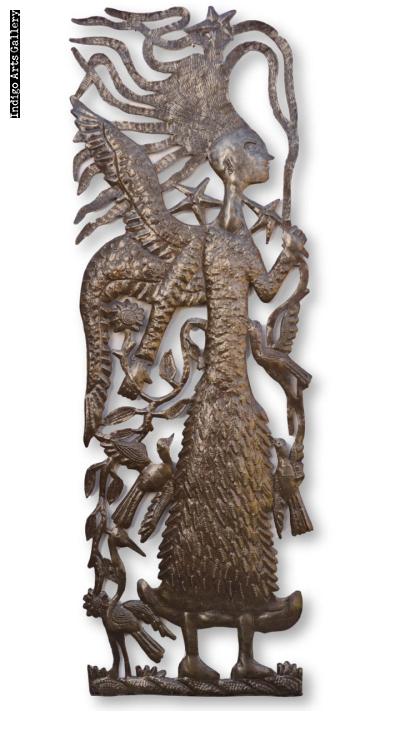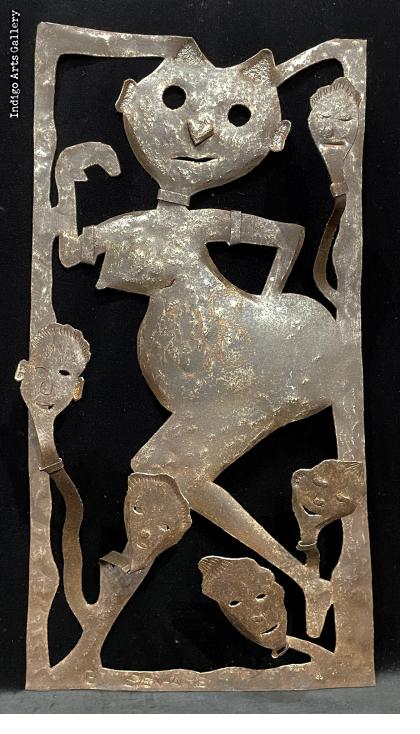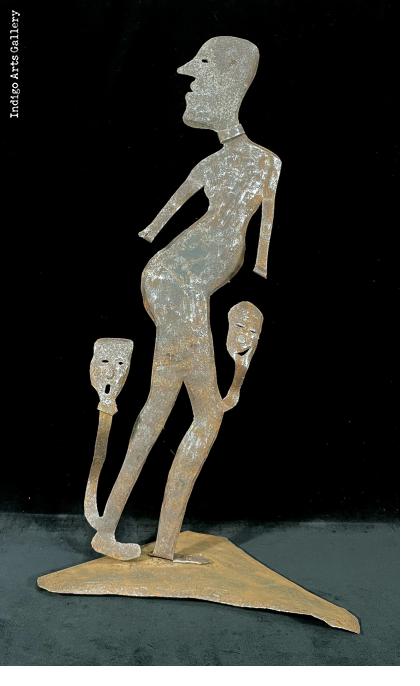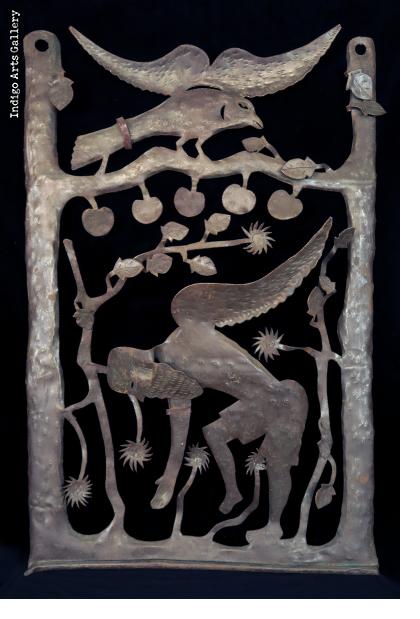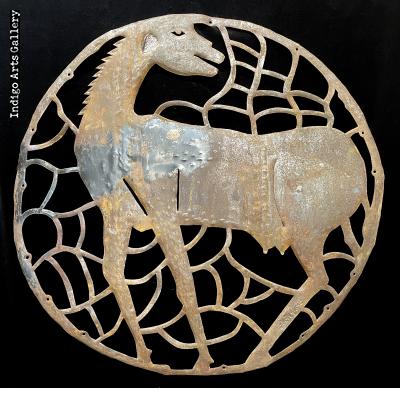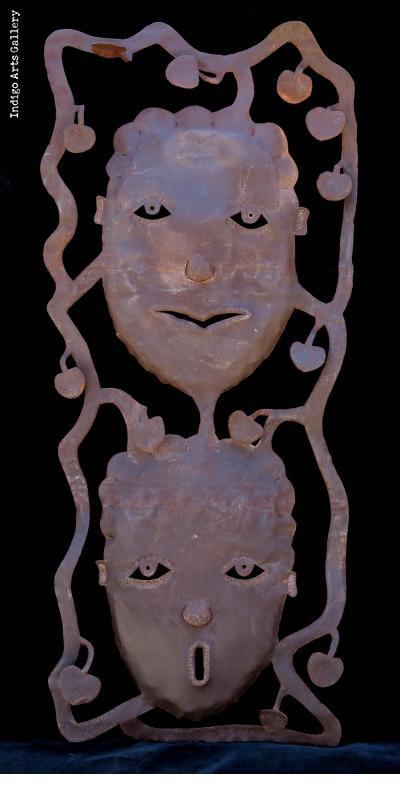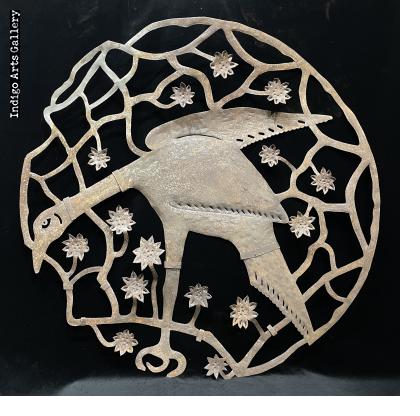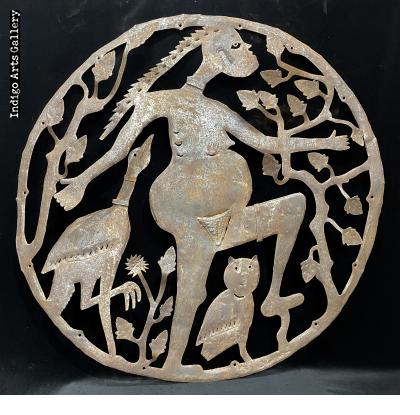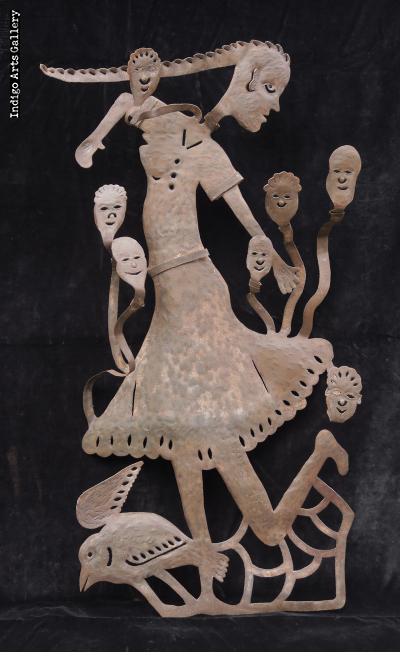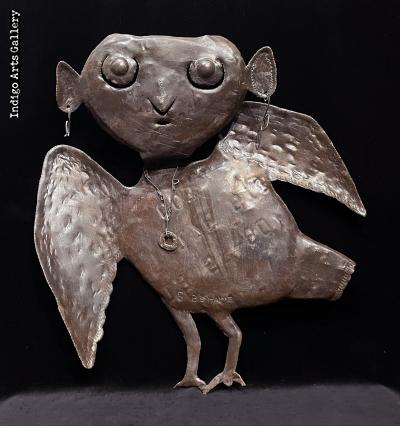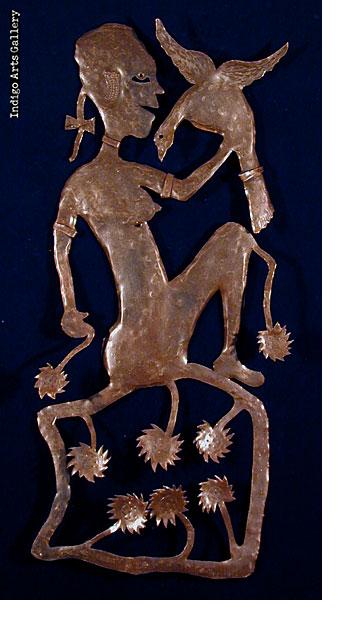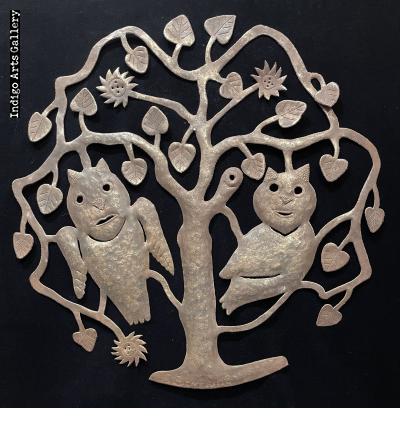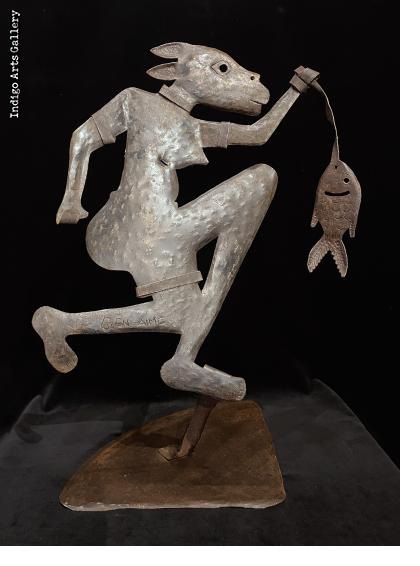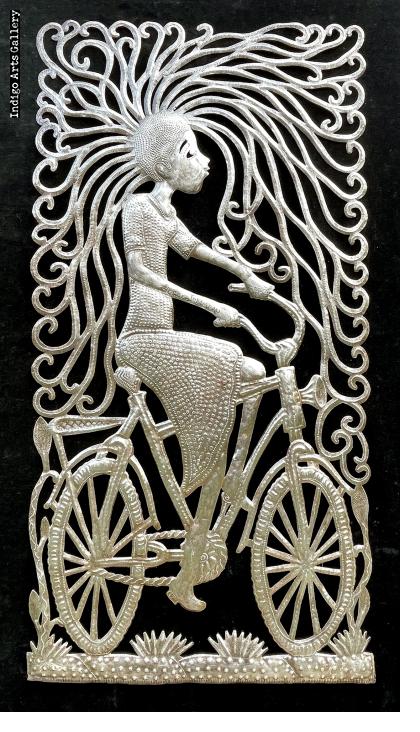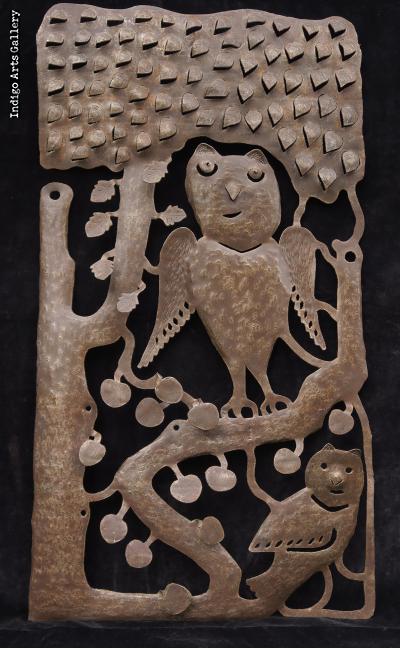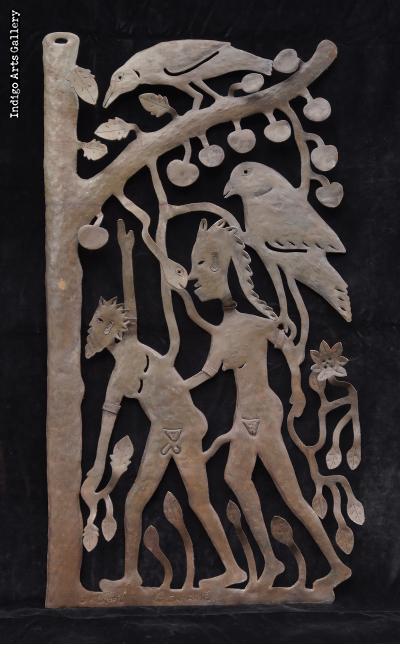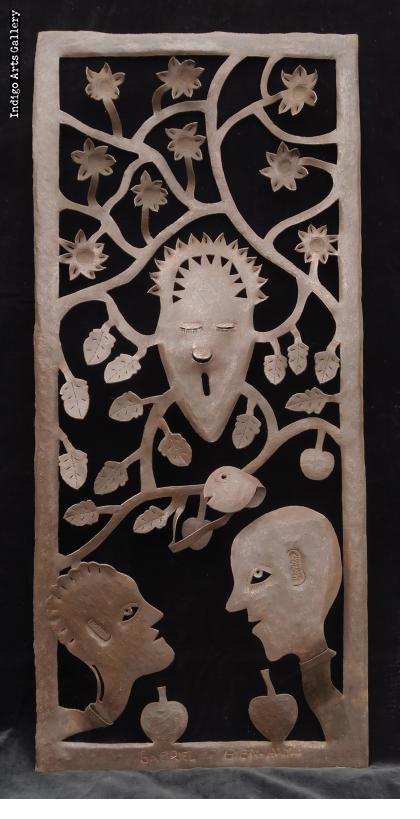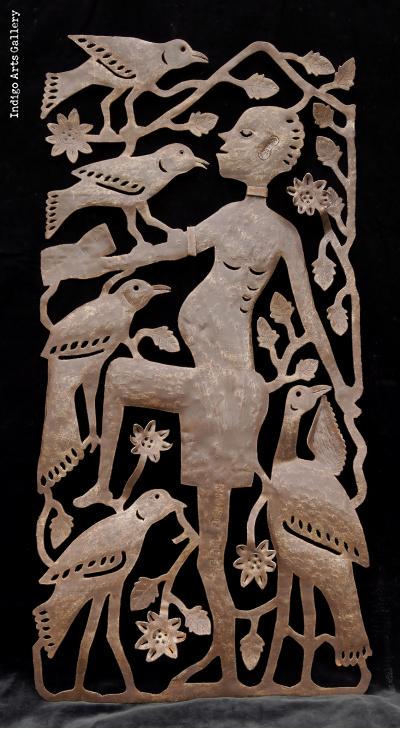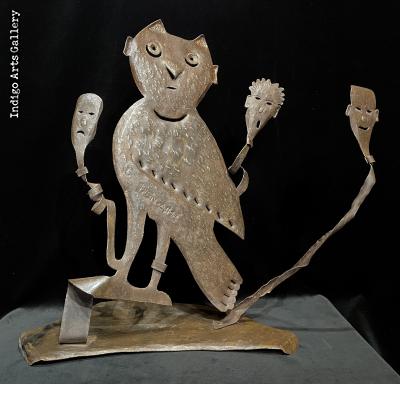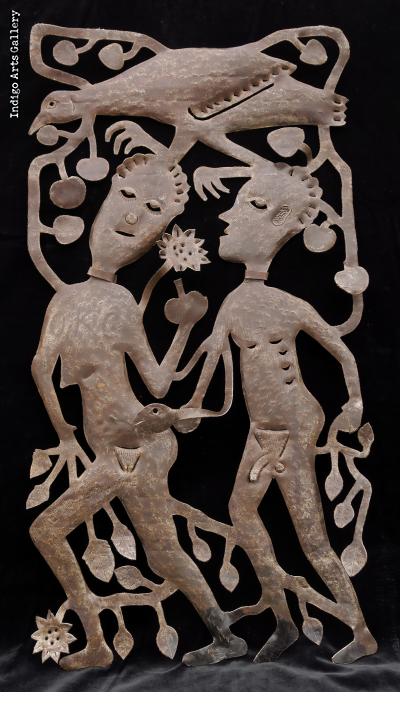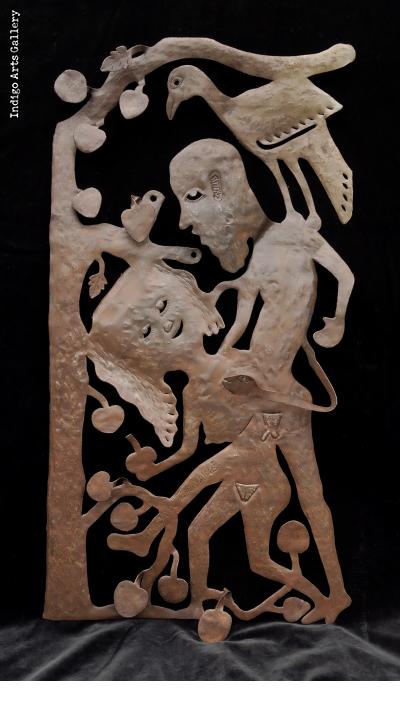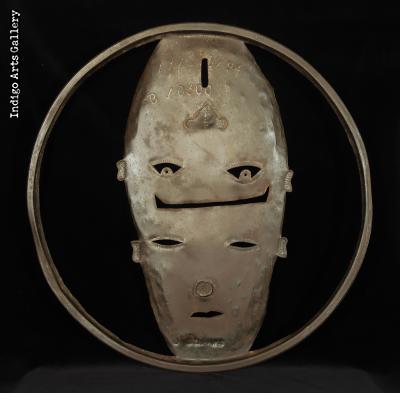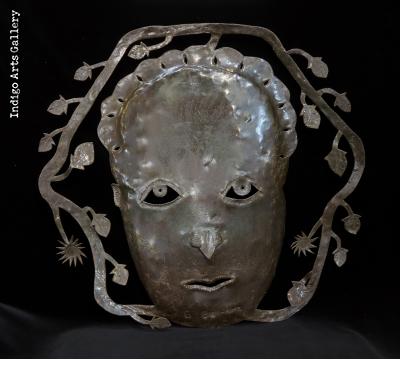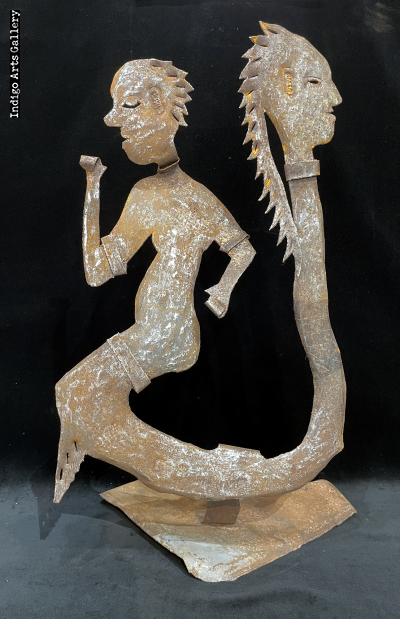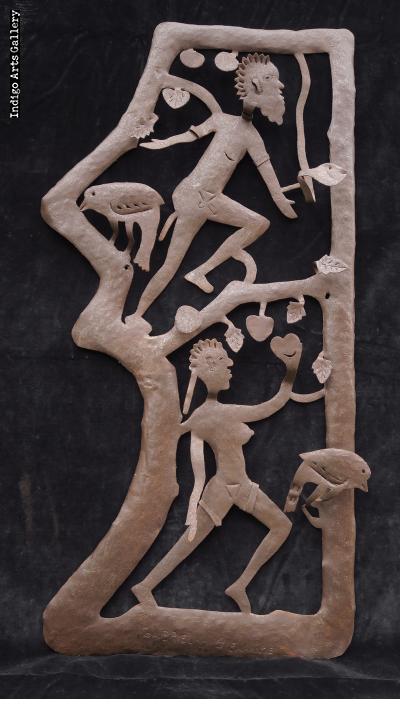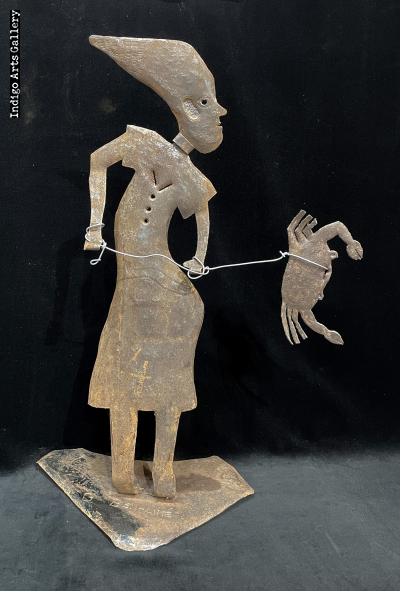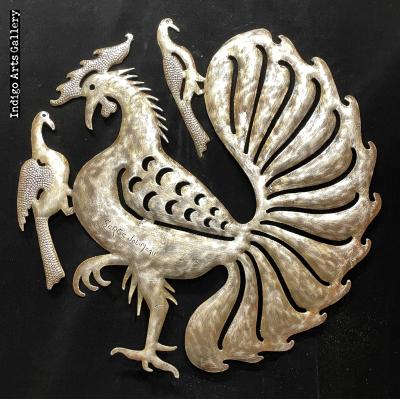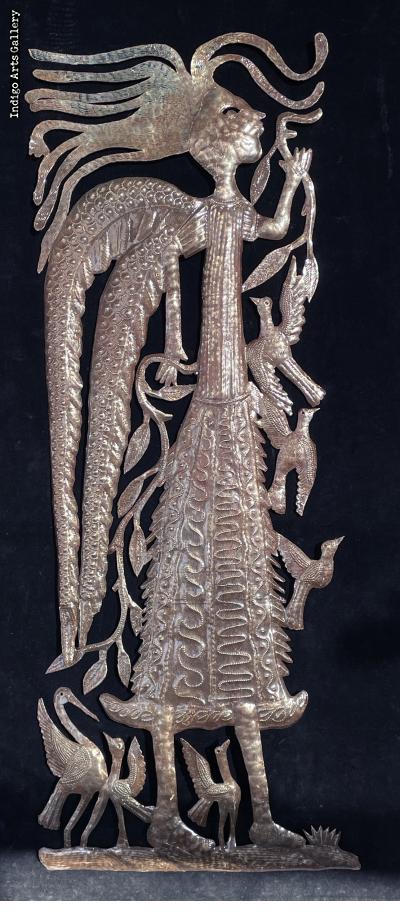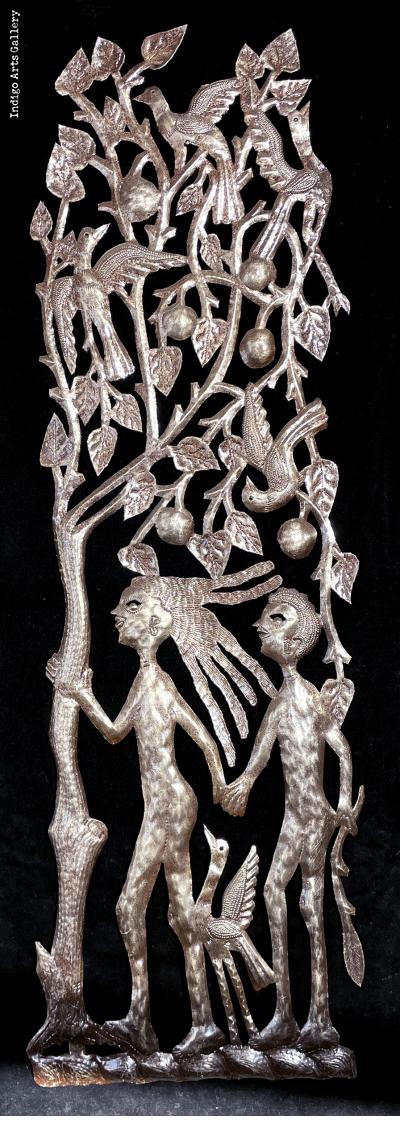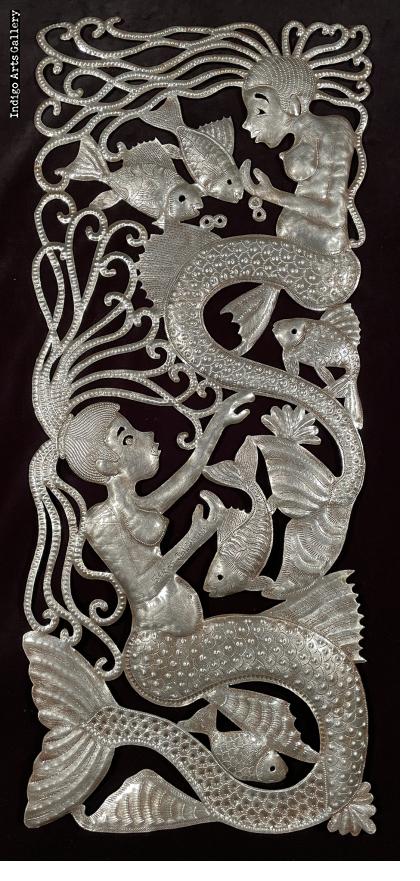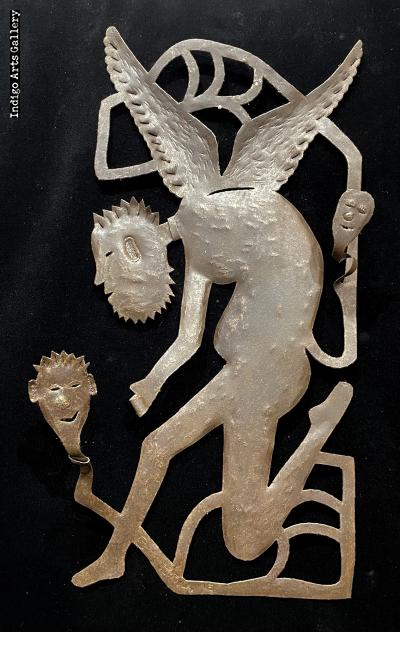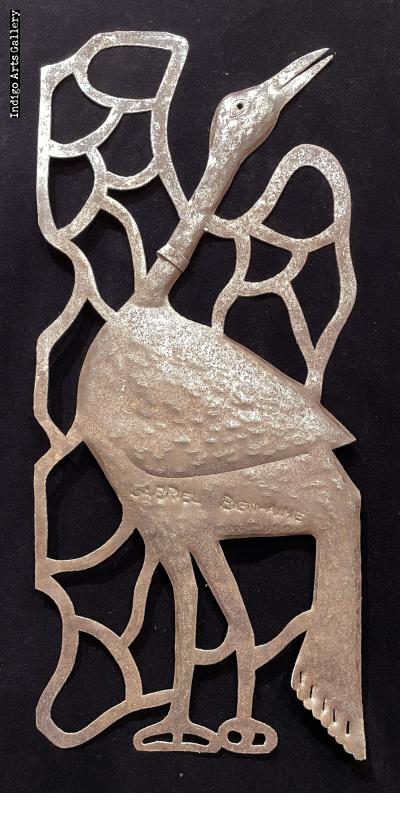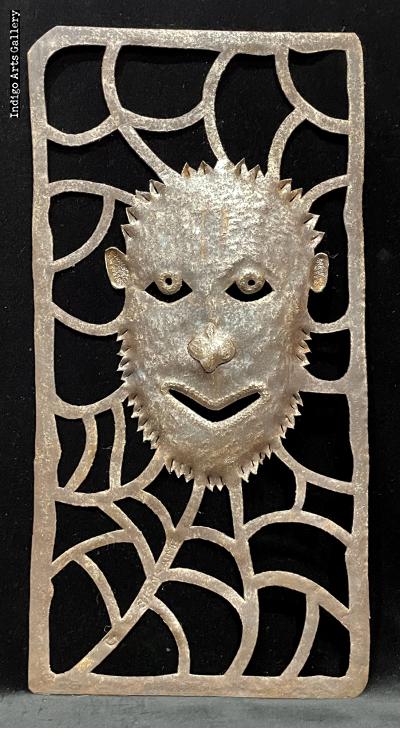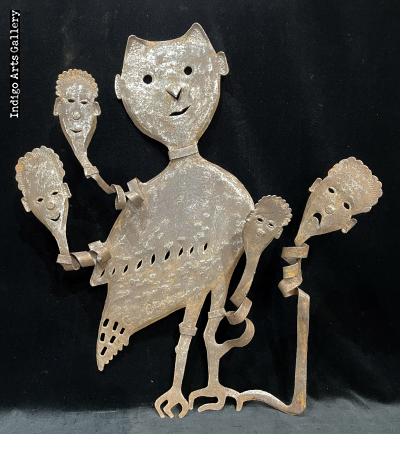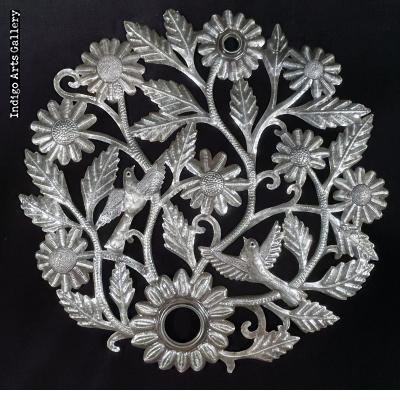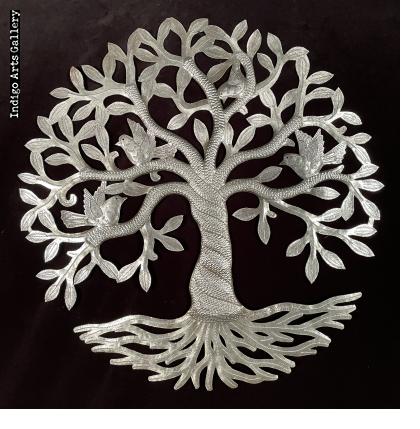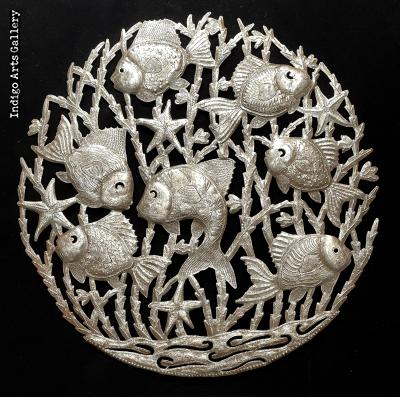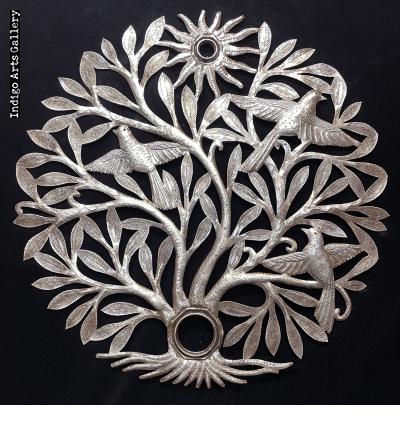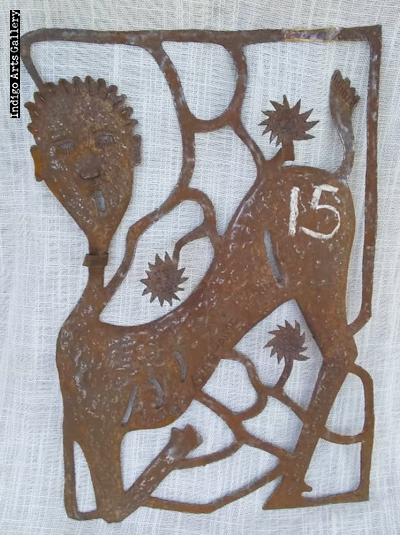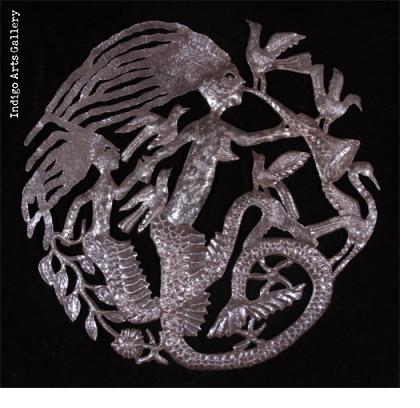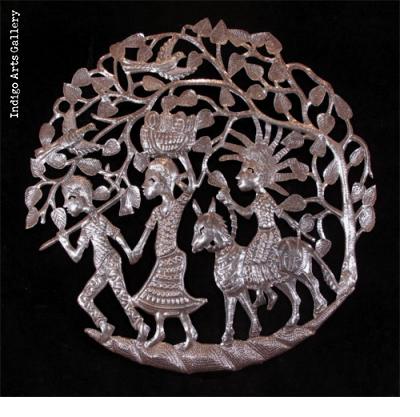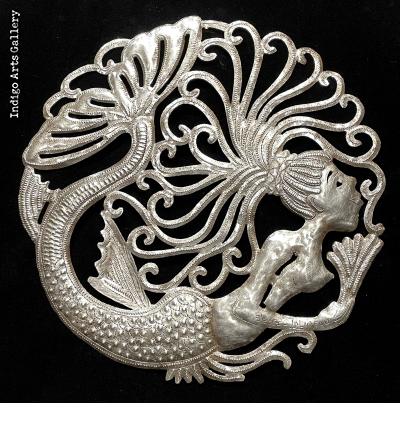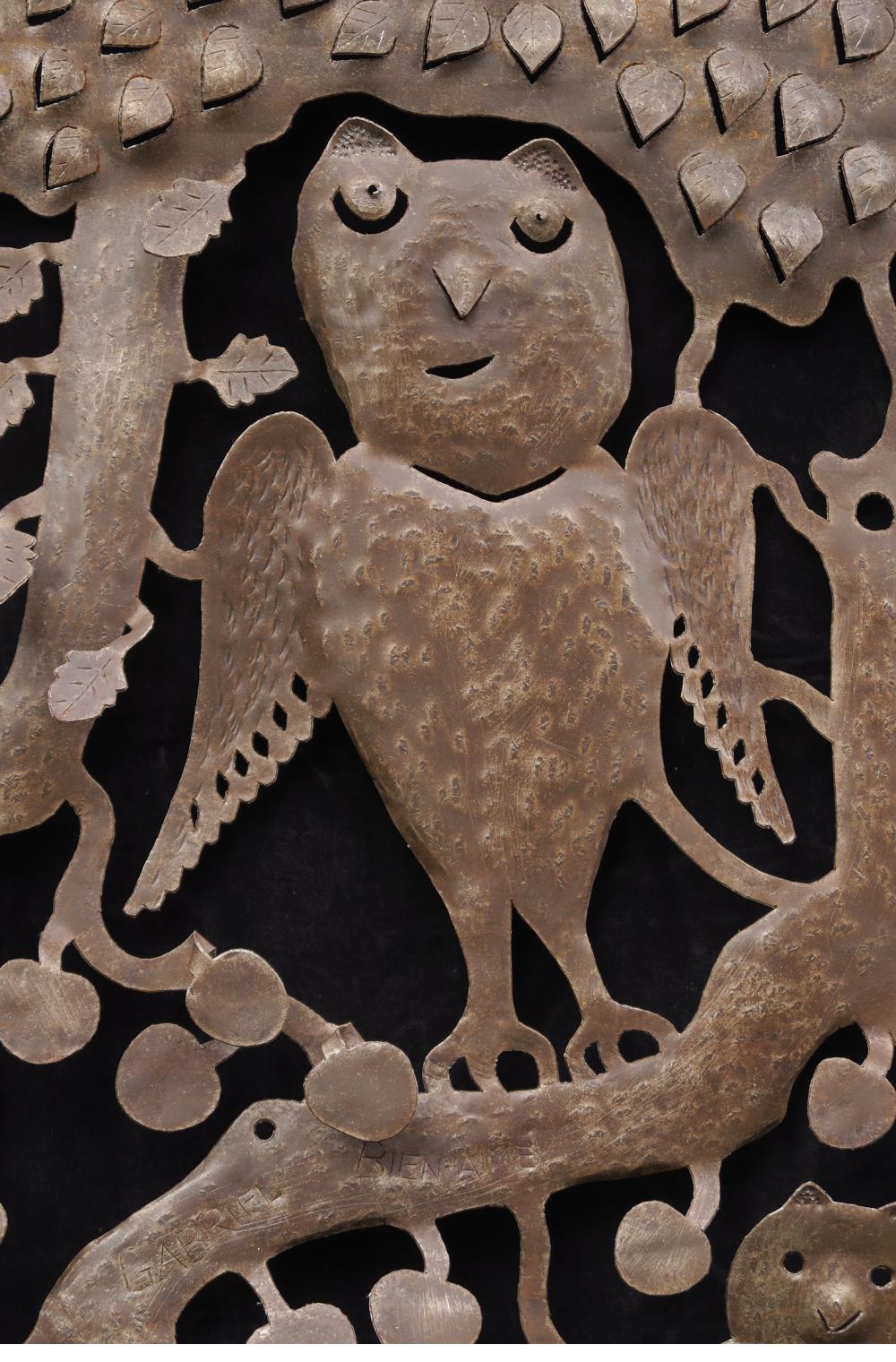
Gabriel Bien-Aimé was born in 1951 in the village of Croix des Bouquets, now known as the “cradle of 20th century Haitian metal sculpture”. Croix des Bouquets nurtured such great Haitian sculptors as the late Georges Liautaud and Murat Brierre, the brothers Louisjuste, and Serge Jolimeau. Bien-Aimé worked as an auto mechanic for several years before apprenticing to sculptor Janvier Louis-Juste in 1971. Working on his own, he has become one of Haiti’s two leading sculptors. Like the "first generation" artists, Bien-Aimé creates his sculptures by koupe fè (Kreyol for "cut iron", "fer coupée" in French) using hammer and chisel to cut the forms out of dwoum - oil drums which have been burned, cut open and flattened. But he is renowned as the artist who broke out of the two dimensional plane, with objects - such as leaves and flowers - that project from the plane of the steel sheet, and others - such as fish and crabs - that hang from pieces of wire and chain. While the work of most of the steel-drum artists is infused with the stories and symbols of Vodou, Bien-Aimé's stood out because, as a convert to Seventh Day Adventism, much of his work told the stories of the Bible (especially Adam and Eve). He also delights in the stuff of daily life. As the critic Selden Rodman wrote, "part of his originality stems from an uninhibited sense of humor."
Bien-Aimé’s work has been exhibited internationally, notably in the groundbreaking 1989 show at the Centre Pompidou in Paris, Magiciens de la Terre. His works are in the permanent collections of the Centre Pompidou, the Musée du Quai Branly, the Musée National d’Art Moderne de Paris, the Waterloo Museum, the Figge Art Museum, the Milwaukee Art Museum, Le Centre d’Art, and the Musée d’Art Haïtien du Collège Saint-Pierre.
His work is published in Where Art is Joy (Rodman, 1988), Forgerons du Vodou/ Voodoo Blacksmiths (Foubert, 1990), Magiciens de la Terre and A Haitian Celebration: Art and Culture(Stebich, 1992).
In July of 2021, marking his fiftieth year as a sculptor, Gabriel Bien-Aimé participated in the International Folk Art Market in Santa Fe, NM. The event fell only a week after the assassination of Hait's president. In the state of siege which followed all of the airports were closed. But the Port-au-Prince airport reopened a day before he was due in Santa Fe. Gabriel arrived with all of his work crammed into two bulging suitcases, and he was able to hang his show - which sold out. Since July Haiti has suffered an earthquake and a hurricane and most recently an outbreak of gang violence and kidnapping which has terrorized the country and brought the economy almost to a standstill. Croix des Bouquets has been at the epicenter of the violence, and all of the artists working there are at risk. Gabriel moved his workshop to a more remote village and has recently been able to visit the United States with some of his new work. This collection includes a selection of recent works along with some early works from the collection of the late American artist Rudi Stern.

